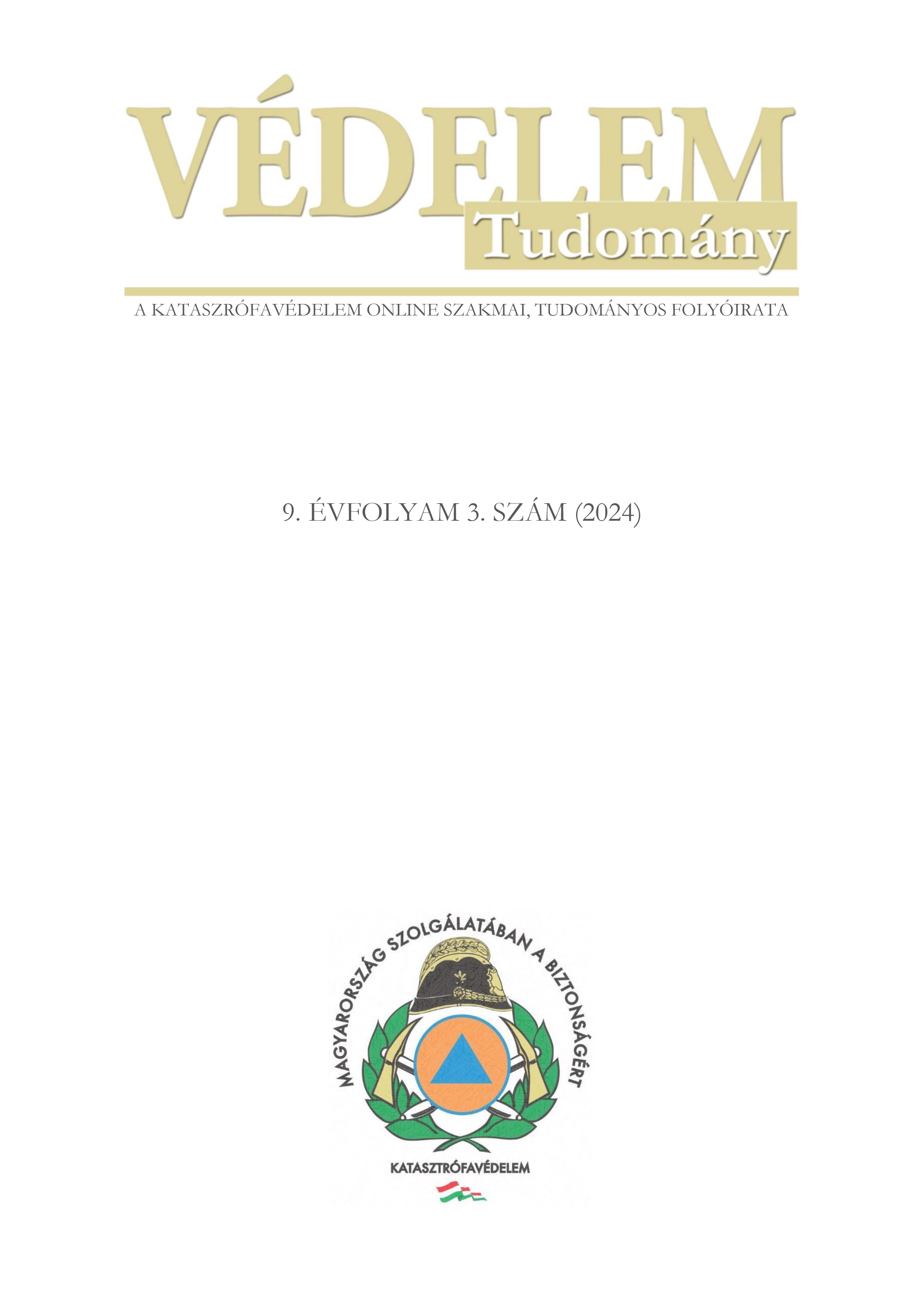Lelki elsősegélynyújtás a Zala Különleges Mentők Egyesületben
Esetismertetés
Absztrakt
A Zala Különleges Mentők Egyesülete egy önkéntesekből álló katasztrófavédelmi mentőcsapat. Régóta folytatott tevékenységük részeként 2016 óta létezik a lelki elsősegélynyújtással foglalkozó mentálhigiénés csoportjuk. A tanulmány ennek a tevékenységnek a bemutatására törekszik, működési elveinek, módszereinek ismertetése után négy eseten keresztül mutatja be azt a munkát, amelynek során valamilyen akut stresszhelyzetet, erős érzelmi megterhelődést, tragédiát átélt személyek szenvedéseinek azonnali enyhítésére, és a poszttraumás állapotok megelőzésére törekszik. Bár a munka eredményességének bizonyítására empirikus, kvantitatív vizsgálatot nem végeztünk, az esetleírások alapján igazolnak tűnik a beavatkozások eredményessége, fontossága.
Hivatkozások
Kémenczy, I: Tömegkatasztrófák pszichológiai hatása. Zrínyi Katonai Kiadó. Budapest. 1980.
Szabó, J. Pszichoszociális segítségnyújtás katasztrófahelyzetben. In: Rosta, A. – Rostáné Riez, A.: Szociálpedagógia - szak-szociálpedagógia. Budapest, Magyarország. L’Harmattan 2021. 475.-495.
Brooks, S. K. – Dunn, R. – Amlôt, R.- Greenberg, N.- Rubin, G. J. (2016): Social and occupational factors associated with psychological distress and disorder among disaster responders: a systematic review. BMC Psychol. 2016 Apr 26;4:18. doi: 10.1186/s40359-016-0120-9.
Eifling, K. – Moy, P. (2015): Evidence-based EMS: Psychological First Aid During Disaster Response. What's the best we can do for those who are suffering mentally? EMS World. 2015 Jul;44(7):32-4.
Solon, R. (2016): Providing Psychological First Aid Following a Disaster. Occup Health Saf. 2016 May;85(5):40, 42, 44.
Ren, Z. – Wang, H. – Zhang, W. (2017): Experiences in disaster-related mental health relief work: An exploratory model for the interprofessional training of psychological relief workers. J Interprof Care. 2017 Jan;31(1):35-42. Epub 2016 Nov 18.
Solomon, R. - Shapiro, F. (2008): EMDR and Adaptive Information Processing Model. Journal of EMDR Practice and Research. 4. 315. - 325.
Shapiro, F. (1994): J Eye Movement Desensitization and Reprocessing (EMDR) and the anxiety disorders: clinical and research implications of an integrated psychotherapy treatment. Anxiety Disord. 1999 Jan-Apr;13(1-2):35-67.
Yurtsever, A et al. (2018): An Eye Movement Desensitization and Reprocessing (EMDR) Group Intervention for Syrian Refugees With Post-traumatic Stress Symptoms: Results of a Randomized Controlled Trial. Frontiers in Psychology. 9. 493
Jarero, I., Artigas, L., Montero11, M., & Lena, L. (2008). The EMDR integrative group treatment protocol: Application with child victims of a mass disaster. Journal of EMDR Practice and Research, 2(2), 97-105.
Besser-Siegmund C. Siegmund H. Készségfejlesztés és stresszkezelés szelíd ráhatással. Z-Press Kiadó. Budapest 2016.
Naumenko K, Steinhäuser J, Niebuhr F, Goetz K. [Short report: coaching as an intervention to treat mild form of fear of flying. Psychol Health Med. 2022 Jul;27(6):1205-1212. doi: 10.1080/13548506.2020.1856391. Epub 2020 Dec 4. PMID: 33275446.
Kiernan MC. Brainspotting: Adventures in Neurology. J Neurol Neurosurg Psychiatry. 2022 Aug;93(8):800-801. doi: 10.1136/jnnp-2022-329455. Epub 2022 Jun 21. PMID: 35835471.
Barcsi, T. Logoterápiai krízisintervenció. In: Szabó, J. (szerk): Munkahelyi lelki egészségvédelem. Pécsi Tudományegyetem. Pécs. 2012. 43-46.
Perdue, J. M., Divakaruni, S. M., Russell, C., Johnson, C., Dowden, C., Kaleda, P., and E. Haran. "Natural-Disaster Preparedness: Best Practices." Paper presented at the Digital Energy Conference and Exhibition, Houston, Texas, U.S.A., April 2007. doi: https://doi.org/10.2118/106920-MS
Shapiro E. EMDR Adaptive Information Processing, and Case Conceptualization. Journal of EMDR Practice and Research. 2007. 2. 68. – 87.
Luber M. Eye Movement Desensitization and Reprocessing (EMDR) therapy scripted protocols and summary sheets: Treating anxiety, obsessive-compulsive, and mood-related conditions. New York: Springer Publishing Company; 2016. doi:10.1891/9780826131683
Maier A, Schaitz C, Kröner J, Connemann B, Sosic-Vasic Z. Imagery Rescripting: Exploratory Evaluation of a Short Intervention to Reduce Test Anxiety in University Students. Front Psychiatry. 2020 Feb 28;11:84. doi: 10.3389/fpsyt.2020.00084. PMID: 32184744; PMCID: PMC7058550.
Arntz A. Imagery rescripting as a therapeutic technique: Review of clinical trials, basic studies, and research agenda. Journal of Experimental Psychopathology, 2012. 3(2), 189–208. https://doi.org/10.5127/jep.024211
Strachan L P. Hyett MP, McEvoy PM. Imagery Rescripting for Anxiety Disorders and Obsessive-Compulsive Disorder: Recent Advances and Future Directions. Curr Psychiatry Rep 22, 17 (2020). https://doi.org/10.1007/s11920-020-1139-4
Krakow B, Kellner R, Pathak D, Lambert L. Imagery rehearsal treatment for chronic nightmares. Behaviour Research and Therapy. 1995. 33.7. 747. – 874. doi.org/10.1016/0005-7967(95)00009-M
Krakow B, Zadra A. Clinical Management of Chronic Nightmares: Imagery Rehearsal Therapy, Behavioral Sleep Medicine, 2006. 4:1, 45-70, DOI: 10.1207/s15402010bsm0401_4
Thünker J, Pietrowsky R. Effectiveness of a manualized imagery rehearsal therapy for patients suffering from nightmare disorders with and without a comorbidity of depression or PTSD. Behaviour Research and Therapy. 2012. 50.9. 558 – 564. doi.org/10.1016/j.brat.2012.05.006
Casement MD, Swanson LM. A meta-analysis of imagery rehearsal for post-trauma nightmares: effects on nightmare frequency, sleep quality, and posttraumatic stress. Clin Psychol Rev. 2012 Aug;32(6):566-74. doi: 10.1016/j.cpr.2012.06.002. Epub 2012 Jun 30. PMID: 22819998; PMCID: PMC4120639.
Wolpe J. The Practice of Behavior Therapy, 1969. New York: Pergamon Press.
Kim D, Bae H, Park Y C. Validity of the Subjective Units of Disturbance Scale in EMDR March 2008 Journal of EMDR Practice and Research 2(1):57-62 DOI: 10.1891/1933-3196.2.1.57
Gerge A. Revisiting the safe place. Method and Regulatory Aspects in Psychotherapy when Easing Allostatic Overload in Traumatized Patients. International Journal of Clinical and Experimental Hypnosis 2018. 66. 2. 147-173. doi:10.1080/00207144.2018.1421356
Tripp T, Potash J S, Brancheau D. Safe Place collage protocol: Art making for managing traumatic stress. Journal of Trauma and Dissociation. 2019. 20.5. 511-525. DOI: 10.1080/15299732.2019.1597813
Copyright (c) 2024 Védelem Tudomány a Katasztrófavédelem online szakmai, tudományos folyóirata

This work is licensed under a Creative Commons Attribution-NonCommercial 4.0 International License.




